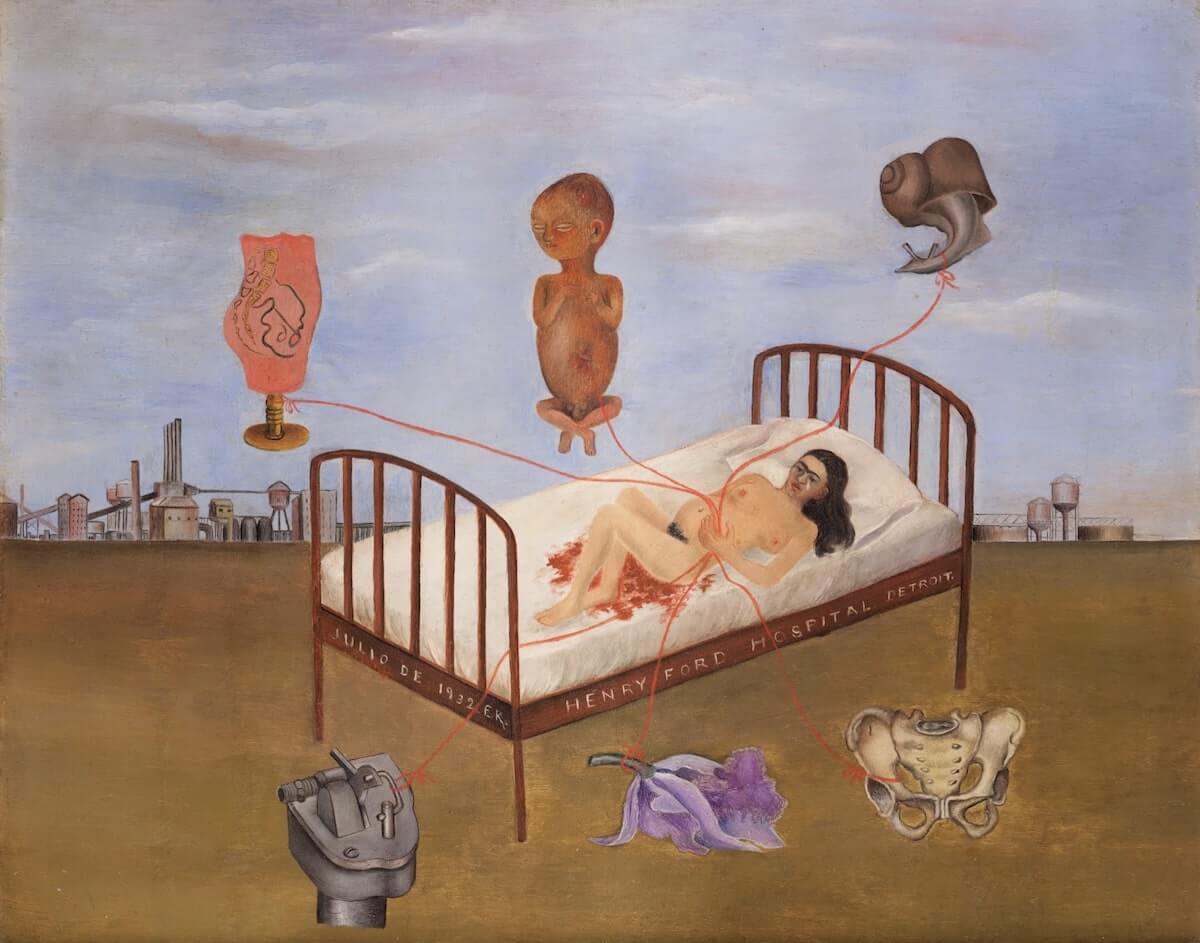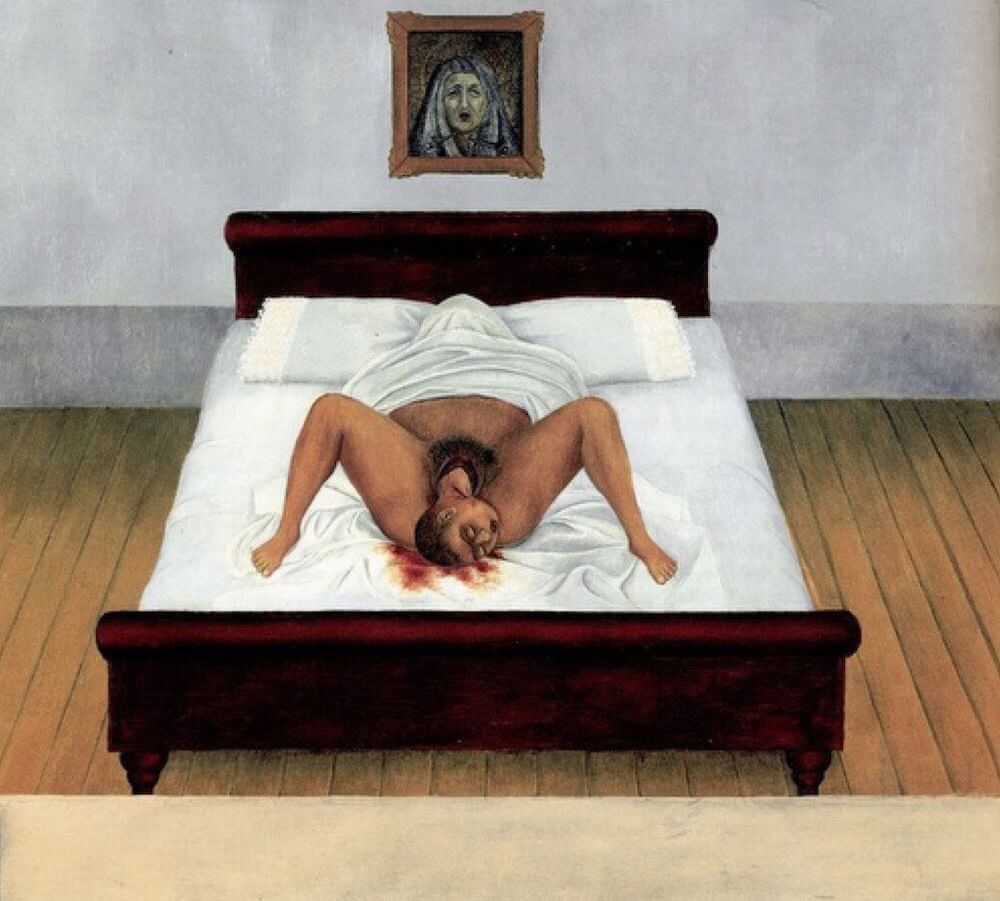Frida Kahlo was a painter, artist and activist who touched our hearts with her soulful presence. Frida is remembered as the Melancholic artist whose life was full of tragedy and sorrow but on the contrary Frida was full of lust for life. She was born at La Casa Azul (The Blue House) in Coyoacan, a town on the outskirts of Mexico City in 1907.
La Casa Azul played a special role in Frida’s life history, it not only served as her childhood home but also as a space of art retreat where she returned to live and work in 1939 until her death in 1954. This house is now known as the Frida Kahlo Museum. Frida suffered a bout of polio as a child that left her with a slight limp which she had to live with for the rest of her life and later a near fatal bus accident. Kahlo had a deep bond with her father, who was a professional photographer, and she was welcomed as an assistant in his studio where she developed an artistic eye in visual arts.
Frida’s art essentially revolves around the theme of identity, the human body, and death. Frida is well known for autobiographical portraits which capture her essence and troubles perfectly. After her marriage to Diego Rivera, a famous mural artist, Kahlo explored her identity in self portraits showing both the colonial European side and the indigenous Mexican side.
In the early 1930s, when Fascism was rising in Europe, Kahlo’s paintings acquired a more Mexican identity as she was exposed to the modernist indigenist movement in Mexico and the idea of preserving the sense of being Mexican was important to her. Frida also changed her name from Frieda to Frida in order to detach from her German roots. Moreover she started wearing the traditional Tehuana costume which signifies the matriarchal times which is now seen as Frida’s signature style and contributes to her personal aesthetics. During this time Frida also experienced difficulties in pregnancy and had a miscarriage and later suffered loss of her mother. These events led Kahlo to paint some of her most celebrated works like In Henry Ford Hospital (1932) where Frida has depicted herself hemorrhaging on a hospital bed surrounded by a barren landscape and My Birth (1932) where a woman covered in a shroud is giving birth.
Henry Ford Hospital, 1932 by Frida Kahlo.
My Birth, 1932 by Frida Kahlo.
Frida’s work extends beyond self portraits as she paints scenes of unfamiliar images juxtaposed together and uses strong abstract symbolism. These works include The Broken Column, The Wounded Deer, The Wounded Table, What the Water Gave Me, Without Hope, My Dress Hangs There and more. Even though Frida denied bring a part of the surrealist movement, she is now known as an important surrealist painter.
“Really I do not know whether my paintings are surrealist or not, but I do know that they are the frankest expression of myself… my subjects have always been my sensations, my states of mind and the profound reactions that life has been producing in me, I have frequently objectified all this in figures of myself, which were the most sincere and real thing that I could do in order to express what I felt inside and outside of myself.” Frida’s painting called Nucleus of Creation (also referred as Moses by Frida) is a beautiful yet complicated piece of artwork.
The painting was a commissioned work and is a meditation on the book called ‘Moses and Monotheism’ by Freud. She said, “I read the book only once, and started the painting with my first impression. Later I read it again, and I must confess I found my work most inadequate and quite different from the interpretation Freud analyzes so marvelously in his Moses. But now there’s no way to change it.” The painting looks like a collection of organized chaos under the Sun.
It brings together a lot of images and symbols like infant Moses with the third eye, a womb carrying a baby, references to Freemasonry and the occult, pre-Columbian religion, religion and mythology from the ancient Egyptian to the Graeco-Roman and Judeo-Christian and the Virgin Mary. Major historical figures like Buddha, Karl Marx, Jesus of Nazareth, Mahatma Gandhi, Adolf Hitler, Napoleon Bonaparte, Julius Caesar and Alexander the Great. Symbols like branches extending out from the dead tree trunks framing the baby referring to the cycle of life and death. Deconstructing a painting like Moses or My Dress Hangs There can be a difficult task as history and memory overlap each other and forms a complex cocoon of visual information.
Frida’s life has been complex just like her paintings and oddly romanticized for its tragedy and chaos. In the 1970s, Frida’s work gained wild popularity and was referred to as “Fridamania”. Frida stands for something beyond the idea of representing a unique femininity or cultural identity; she still lingers with her gory imagination and shocking worldview demanding the world to be more hopeful no matter the cost.
The Broken Column, 1944 by Frida Kahlo.
My Dress Hangs There, 1933 by Frida Kahlo.
Text by Mariyam Fatima.
Image Courtesy: Https://www.fridakahlo.org/









